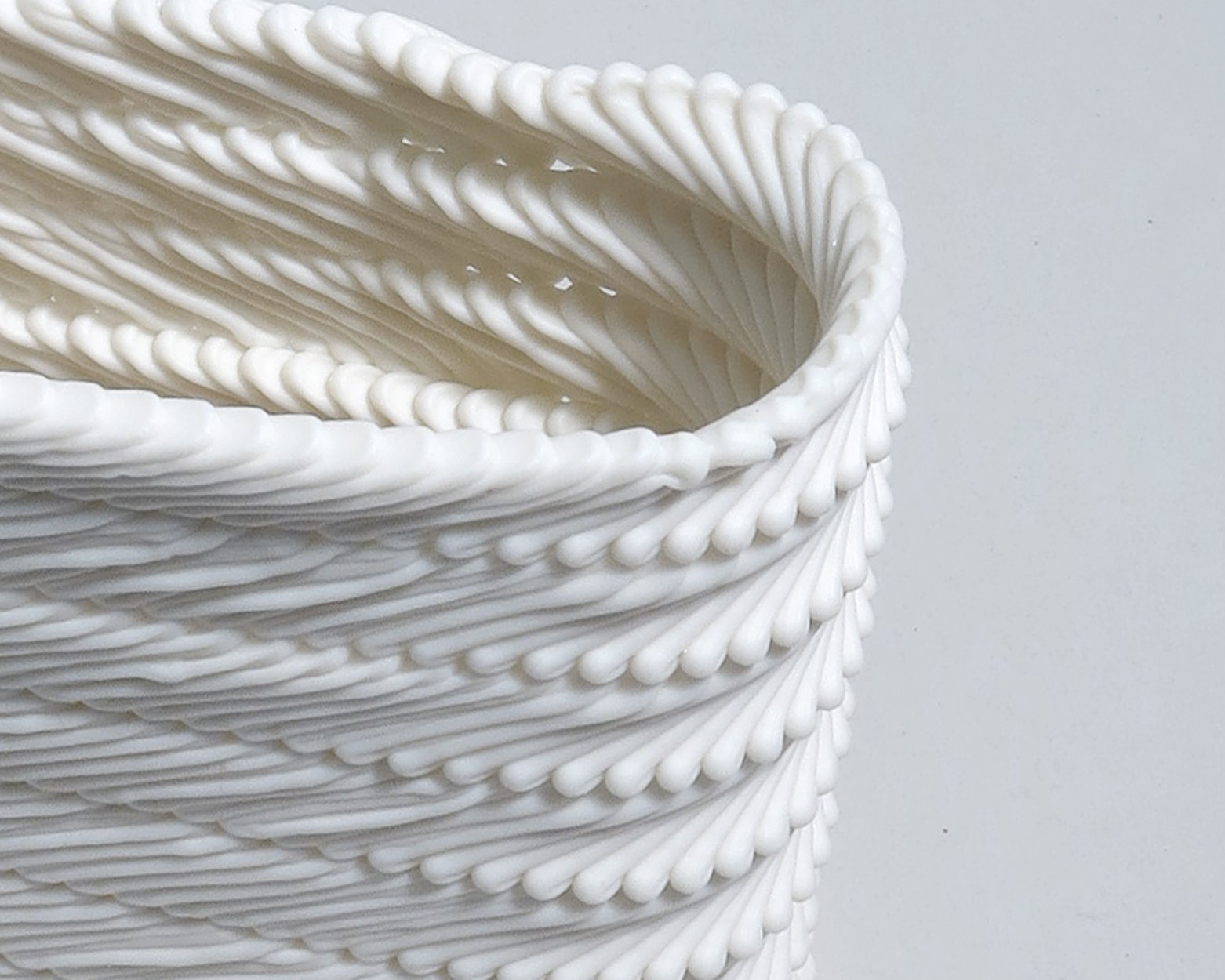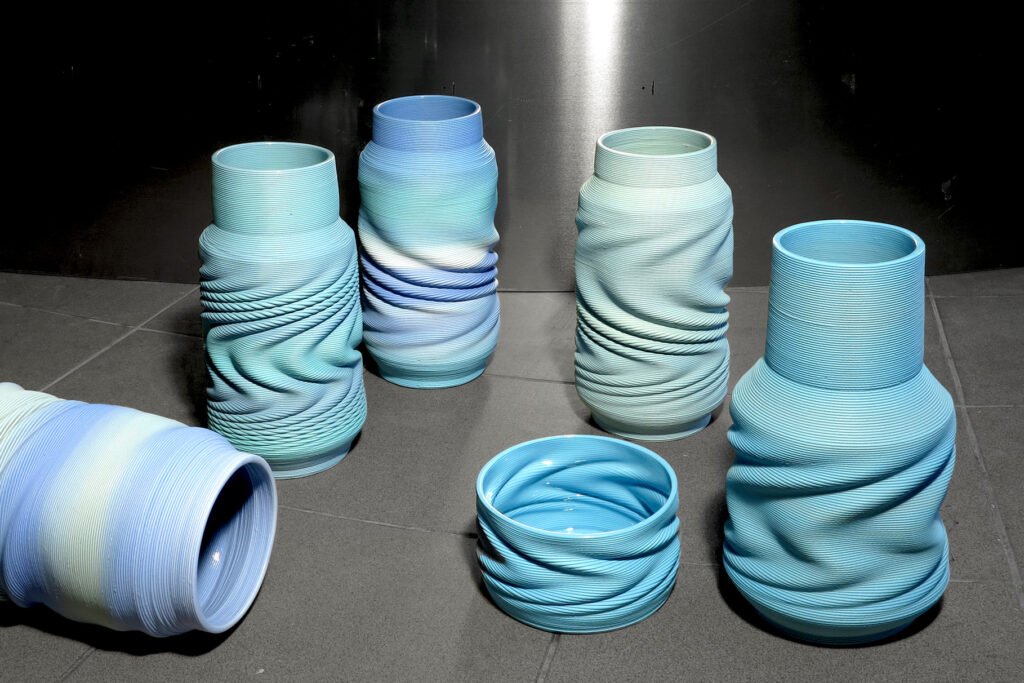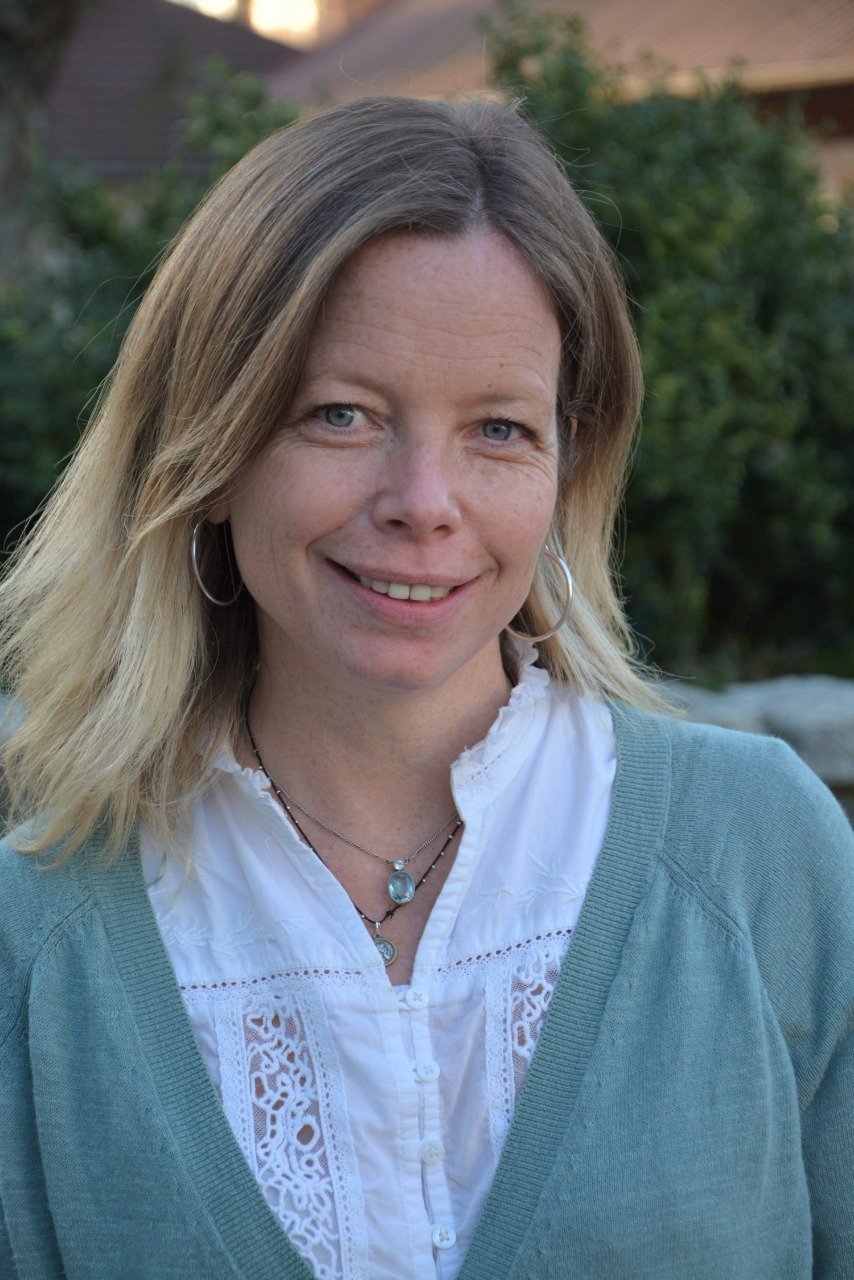Babette Wiezorek
Descripción curricular
Babette Wiezorek (*1984) is a Berlin based product designer (MA) and art historian (MA) who researches and works at the interface of materials, technologies and the processes that connect them. She focusses on additive and computer-aided manufacturing (3D printing) with semi-fluid, predominantly ceramic materials. Her research activities are based on a fundamental interest in natural and technical formative processes, thereby she implements organic strategies such as control loops and feedbacks into technical systems such as 3D printing. By doing so, she questions the potentials of this technology and her aesthetically driven approach to material, machine and code is always inscribed in the results and artefacts. In 2017, she founded the design studio Additive Addicted; she teaches at various universities in Kiel, Hamburg and Braunschweig and Berlin. Her work has been exhibited in Milan, Eindhoven, Berlin, Frankfurt a.M., Vienna and Leipzig, among others, and she is also a member of the forschungskreis.com.
With a design and research-driven perspective on digital technologies and a well-founded awareness of the sensual qualities of porcelain, Babette searches for an aesthetic symbiosis of technology and material. Following that approach, porcelain objects and vessels are created that develop extremely filigree and complex structures and push the material to its static limits. Her ouevre encompasses textile-like surfaces and organically grown forms, clearly structured bodies and seemingly random, geomorphic arrangements. What they have in common is a delight in the sensuality of porcelain as a material and a curiosity to push the limits of the potential of digitally supported procedures, to challenge, to combine and explore them.
“The domain I’m operating in is characterised by an interweaving of the complex qualities of ceramic materials, the strange logic of digital tools and the possible patterns of the machine's movements. Beyond this, it is also about finding forms and expressions that touch our bodies and induce our senses, that irritate us and – ideally – stimulate resonances between artefacts, processes and the humankind. I seek the connections between codes and materials, between precision and vagueness, between digitality and empathy.”
Sitios en internet:
Generative Design with Grasshopper and Ceramic 3D Printing
Descripción del taller
The workshop conveys and explores in a practical way which potentials and possibilities can be found in the combination of generative 3D modelling and 3D printing with ceramic materials. Togeheter will learn the entire procedure of 3dprinting with a specific focus on ceramic materials: What are ceramic materials? What kind of characteristic they have? How to build 3d-models for printing and controll the machine by generating the socalled GCodes?
The workshop also focuses on the Rhino PlugIn "Grasshopper" - a digital tool for generative and parametric 3D modelling. In addition to its graphical user interface, Rhino has an open interface - the so-called Rhino script - through which one can 'programme' the shape to be generated in a text-based way. The Grasshopper PlugIn uses exactly this interface and provides a 'visual' construction kit of pre-programmed functions. Mathematical, geometric and logical operators can be connected in a visual way. This kind of programming allows a quite easy access to algorithms for the definition of complex and manifold shapes. Together we will develop a script describing a 'formal logic' and giving a grear variety of possible geometries. Your generated shapes will then be 3d-printed with ceramic materials, thus making it possible to grasp the potentials lying in this approach in a hopefully vivid and playful manner.
Materiales:
Repetier Host (open source software)
Rhino (90 days testversion for free)
Colaborador:
Sibylle Von Baer
svonbaer@uct.cl






